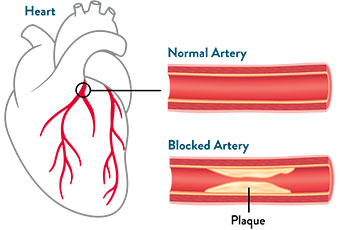Visit ClinicalTrials.gov
To learn more about the Coronary IVL IDE Study.
Coronary artery disease happens when the arteries that supply blood to your heart become narrow or blocked.
This is often caused by a condition called atherosclerosis, where plaque (a mix of fat, cholesterol, and calcium) builds up in the arteries. When this plaque hardens, it can restrict blood flow and oxygen to the heart. Atherosclerosis is one of the main causes of coronary artery disease, and advanced atherosclerosis is typically associated with calcium buildup in the coronary arteries.1 Coronary artery disease and stenosis develop when plaque builds up in the vessels and blocks blood flow and oxygen supply to the heart. Coronary artery disease is the most common type of heart disease.2 Calcium buildup in the coronary arteries is associated with the incidence of coronary artery disease and is a direct measure of atherosclerotic disease. It can also serve as an indicator of coronary artery disease mortality. 3,4
A common method to open blocked coronary arteries is percutaneous coronary intervention (PCI), also called revascularization. Many people with coronary artery disease require a stent to keep the coronary arteries open once blood flow has been restored. However, placing a stent can be difficult in a coronary artery that is blocked by calcium buildup. Therefore, vessel preparation to break up the calcium may be needed before placing the stent.

Calcium buildup in the coronary arteries can vary based on an individual’s background. Here are some key points:
References
CL1028213 Rev. A
Stay Connected